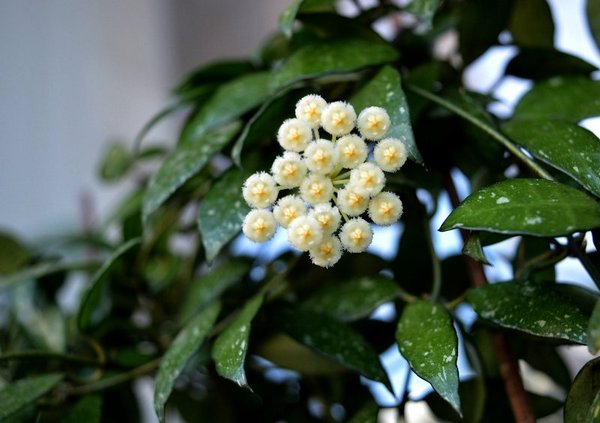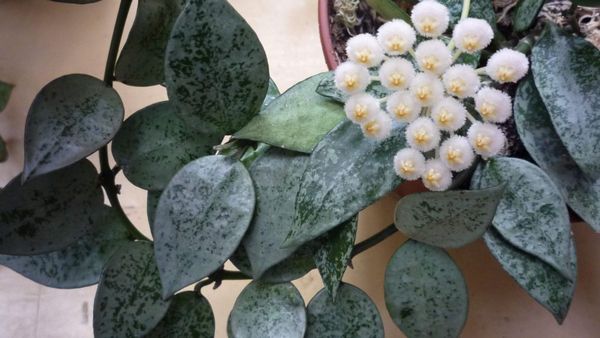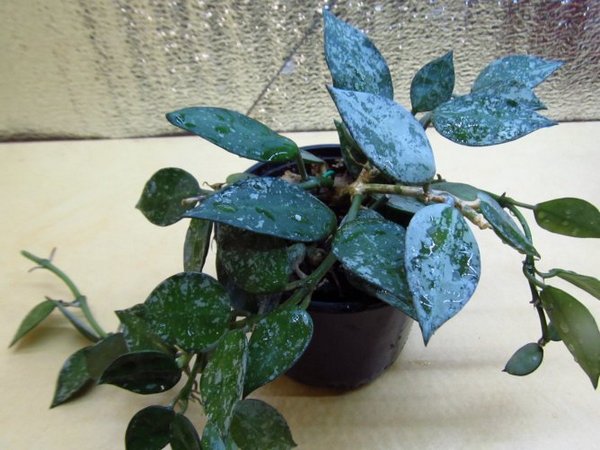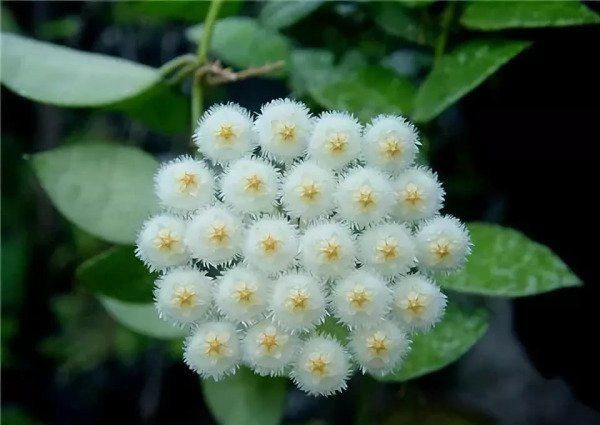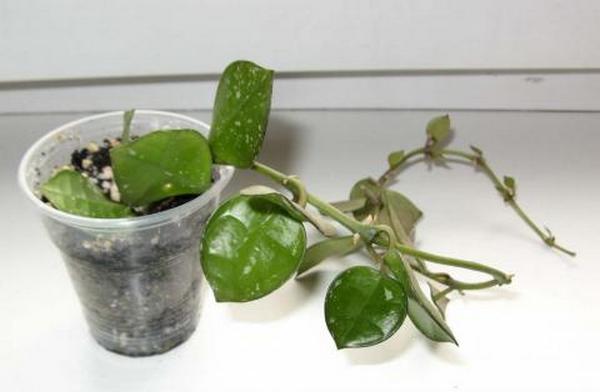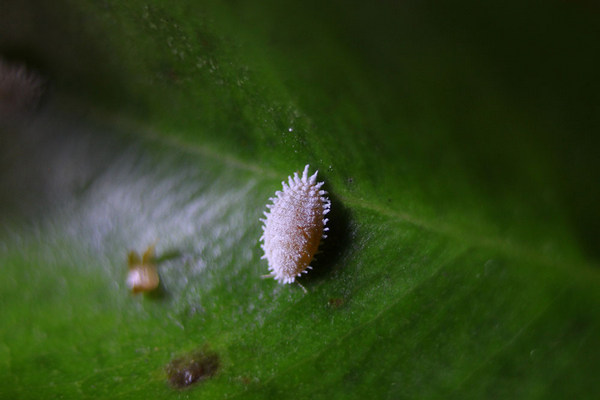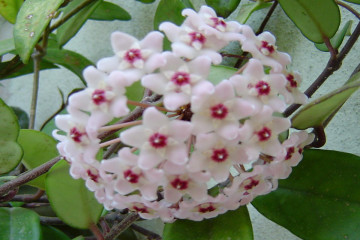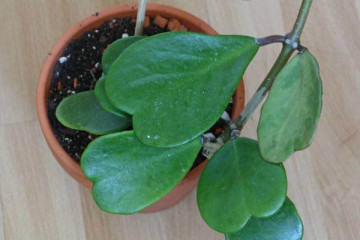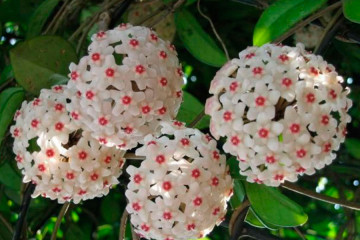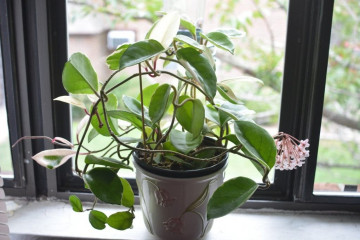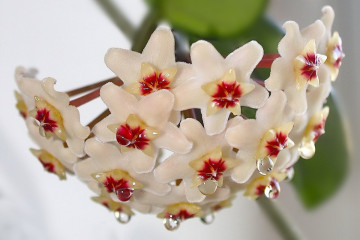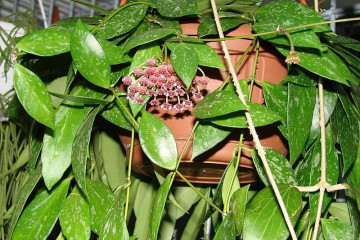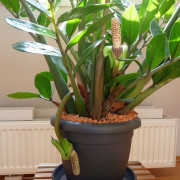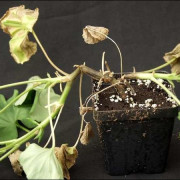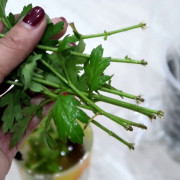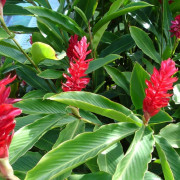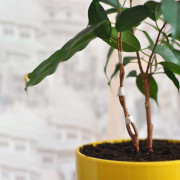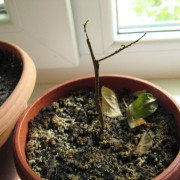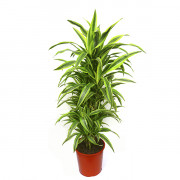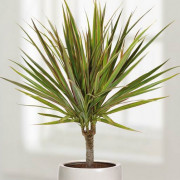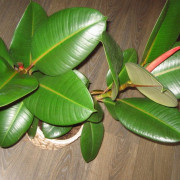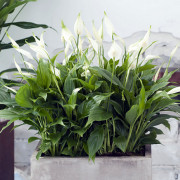Hoya lacunosa - types of Eskimo Silver and Royal Flush
Content:
Hoya lacunosa is a popular indoor vine that attracts attention with its large foliage and unusual inflorescences. Easy care allowed her to enter the rating of plants loved by flower growers.
What does it look like, which family it belongs to
The culture is a representative of the evergreen vines of the Kutrovy family, the Lastovnev subfamily.
The foliage of the plant is double-sided: the purl is shiny, and the front is matte. The leaf grows in length up to 6 cm, in width - up to 2.5 cm. Initially, they are reddish-brown in color, then turn dark green.
Greenish stems with reddish undertones, represented by numerous lashes. 15-20 inflorescences with white or pinkish color are located on thin twigs. The aroma from the buds intensifies in the evening.
The plant has been cultivated at home since 1826. The new varieties have variegated rather than classic green foliage.
Common varieties
The description indicates the following varieties:
- Tove - with a miniature size, the foliage is painted in a purple hue. The inflorescences have a creamy tone and a yellowish core. The diameter of the buds is up to 6 mm.
- Snow Caps - silvery foliage grows up to 5 cm long and 2 cm wide. Flowers of a snow-white shade, up to 10 mm in diameter. Refers to slowly growing varieties.
- Hoya Eskimo (hoya escimo) - with diamond-shaped glossy foliage, on which greenish-silvery spots are randomly located. Hoya lacunosa eskimo has snow-white buds that are standard for this subspecies. If a silvery shade prevails on the leaves, then the prefix "super" (super) or "silver" is added to the main name.
- Royal flash - characterized by dark bronze foliage with small silvery spots. The buds of the Royal Flash (flash) are white, the young growth has a brownish-reddish tint.
Features of home care
Liana is demanding for regular bathing and air humidity.
- Temperature
During the growing season, the temperature regime is from +17 to +22 degrees, in winter - from +12 to +15 degrees.
- Lighting
The plant needs diffused light. In the northern regions, in winter, he needs additional lighting.
- Watering
The soil should remain slightly moist during the spring and summer months. In winter, the amount of watering is reduced to 3 times a month.
- Spraying
Liana requires regular shower and spraying.
- Humidity
Moisture readings at 60%.
- Priming
The land is bought in a flower shop (for lianas) or is a mixture of equal parts of peat, humus, river sand and fertile soil.
- Top dressing
Soil enrichment is carried out with solutions for epiphytes. During the growing season, the amount of nitrogen is reduced - under its influence, the plant will become watery and soft.
- Pruning
Pruning of the main shoots is carried out regularly to stimulate the growth of side branches.For the first time, pruning is carried out after the formation of 4 leaves on the main shoot.
Features of growing in the open field
Liana is not able to take root in the Russian climate. In summer, containers are taken out into the fresh air, reinforced with supports and hidden from the sun and wind.
When and how it blooms
Flowering culture has its own characteristics.
- Types of flowers
In the umbellate inflorescence, there are up to 20 buds, each of them lives no more than 5 days. The petals are painted in a snow-white, cream or pinkish tone, the core is yellow. The first flowers form in May.
- Flower shapes
The bud has a white fleecy corolla and the same color of the crown with a lemon-toned center. The flower opens up to 6 mm in diameter.
- Flowering period
The plant blooms in May, each inflorescence lives for about 5 days.
Changes in care during flowering
From May days to September, the liana needs diffused lighting and space for shoots (they are attached to the supports).
How hoya reproduces
Reproduction in any way takes place without complications.
- Germinating seeds
Seed propagation is practically not used, due to the complexity of purchasing material.
- Rooting cuttings
Shoots are cut into cuttings of 5 cm, germinated in a substrate or water. The first roots will form in a week. To create the desired moisture culture, the cuttings are covered with a transparent cap.
- Sheet
The foliage is selected with the longest petioles, then they are placed in the soil at a slight angle. Cover from above with a glass container or plastic wrap.
- Other options
Liana reproduces well by layering - shoots are covered with rudimentary root forms. After immersion in the soil, they will begin to develop.
To get young, it is enough to fix the shoot in a container, which is placed next to the mother. After a short period of time, a rooted plant is obtained, which is cut off from the main one.
Transfer
Transfer work is carried out at any time of the year. A few weeks before the procedure, the plant is taken out of the pot, transferred to dry soil and not watered until signs of wilting appear. After that, the hoya can be planted in a new container.
Possible growing problems
Compared to relatives, the culture has good immunity and rarely gets sick.
Pests
The main insect parasites attacking the vine are represented:
- spider mite;
- aphids;
- mealybug;
- scabbard.
If pests are found, the foliage is mechanically cleaned with soapy water and sprayed with an insecticidal composition. Processing is done several times - until the complete destruction of the parasite.
Other problems
Liana does not tolerate the excessive dryness of an earthen coma. Once the buds appear, the containers cannot be rearranged. To awaken the plant after hibernation, you will need to take a bath with immersion in water for an hour (30 degrees). Strengthening the immune system is carried out with a decoction of potatoes.
Common cultural diseases include:
- bacterial damage - causes softening, stickiness of foliage and shoots, requires processing with store products with copper;
- viral - it is determined by thickenings and spots on the foliage, it practically does not lend itself to therapy, the plant slowly dies and requires quarantine;
- fungal - provokes rotting of the root system and stopping growth, requires replacing the soil and treating the roots with activated carbon powder.
Flower types
Nurseries offer the following crop varieties:
- Hoya lacunosa aff. (similar) - has a slight difference in the size and color of the foliage;
- Hoya lacunosa v. snow caps - with dark green foliage and silvery blotches, growing up to 12 cm in length and 2 cm in width, with snow-white inflorescences;
- Hoya lacunosa v. pallidiflora Hook f. - determined by small leaves, more common in the Thai and Malaysian regions.
Hoya Lacunosa Eskimo is interesting not only for professionals, but also for inexperienced growers. The unpretentious liana blooms quickly and rarely gets sick, does not require complex supervision or special skills. Subject to the rules of cultivation, the plant will delight with its unusual aroma throughout the summer.
